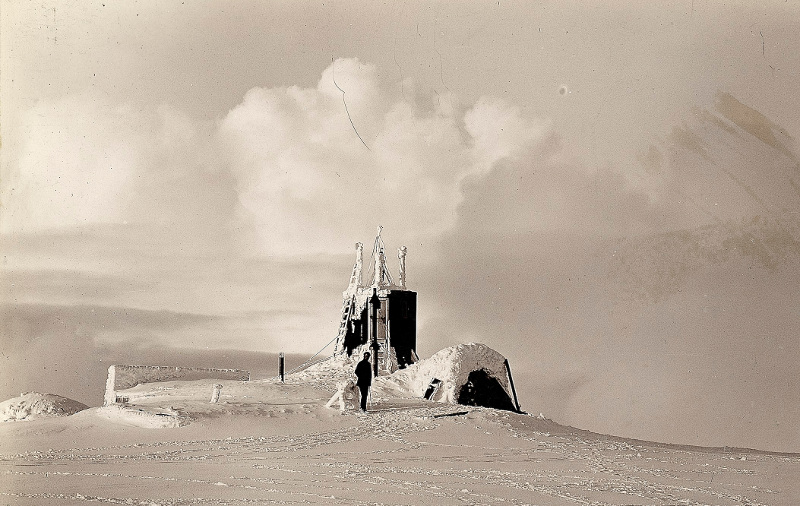Scientists appeal to UK public to unearth ‘lost’ Ben Nevis weather data
05 September 2017

Scientists are on a mission to rescue two million pieces of ‘lost’ weather data gathered more than 100 years ago by intrepid volunteers on Britain’s highest mountain - but they need the public’s help.
For more than 20 years, a team of Victorian meteorologists stationed on Ben Nevis recorded eight pieces of information about the weather every hour, day and night, 365 days a year.
Now known as the Weathermen of Ben Nevis, they measured temperature, pressure, rainfall, sunshine, cloudiness, wind strength and wind direction from 1883 to 1904. Hourly data was also taken at sea level at nearby Fort William. All this information was compiled in five hefty volumes published by the Royal Society of Edinburgh between 1890 and 1910.
Today, researchers are asking for people across the UK to help ‘digitise’ the data on temperatures, pressure, rainfall, sunshine, cloudiness, wind strength and wind direction. From the original tables, the information can be typed into a growing database. Unearthing this data will shed light on how our climate is changing, bringing the past back to life to help understand the weather today and in the future.
And the clock is ticking. Operation Weather Rescue: Ben Nevis is launching today as part of the UK Natural Environment Research Council’s free public event UnEarthed at Dynamic Earth, Edinburgh, from 17-19 November, bringing the world of environmental science to the public.
"The fastest way to collect new weather observations is by looking back in time" - Professor Ed Hawkins, University of Reading
Operation Weather Rescue: Ben Nevis is led by NERC-funded climate scientist Professor Ed Hawkins, of the National Centre for Atmospheric Science and the University of Reading.
He said: "The fastest way to collect new weather observations is by looking back in time. Operation Weather Rescue: Ben Nevis will fill gaps in our knowledge and provide a baseline from which we can measure any changes to the weather today.
"Unearthing this type of data feeds into the bigger picture; helping international researchers understand climatic changes and make better forecasts for the future.
"The Ben Nevis weather data will tell us more about extreme rainfall which is thought to be becoming more common in the UK. The logbooks also contain records of sightings of the Northern Lights. On top of this, using historic data to better understand mountain weather will be useful to mountain rescue agencies.”
'Ambitious target'
Julia Maddock, NERC UnEarthed Director, says: “We want to give everyone the chance to be part of the science we fund. Rescuing old data is a way that everyone can help improve our modern understanding of weather. We have set ourselves an ambitious target of rescuing two million data points by November so we can share what we have discovered at our free event. I am hoping that the people of the UK are up for this challenge.”
Marjory Roy, former Superintendent of Met Office Edinburgh, and author of The Weathermen of Ben Nevis, a fascinating insight into the work and lives of those who gave their time on the top of the mountain to make the original weather observations, is also supporting the campaign.
"We are missing so much data worldwide that it is vital that we start to uncover these hidden records and put them to use" - Marjory Roy, author and former Superintendent of Met Office
Ms Roy said: “The meteorologists dutifully took observations every hour and, at the end of each month, and sent copies of them to the Met Office where they were stamped, filed and promptly forgotten.
“There is very little data from the top of any British mountains, and to have such complete detailed hourly observations is incredible. We are missing so much data worldwide that it is vital that we start to uncover these hidden records and put them to use. They will be invaluable in helping us to better understand changes in our weather and the relation between sea-level weather and conditions on our mountain tops.
"The logs also reveal what life was like for the team on top of Ben Nevis. They were very hospitable to climbers who scaled the north face in winter, presumably because it meant someone new to talk to. In summer they had too many “tourist” visitors, who could interfere with the work. They enjoyed when the snow built up around the building in the early winter and insulated it from the howling winds outside. At one point they even had a pet cat.”
Dr Hermione Cockburn, Scientific Director at Dynamic Earth added: “We’re incredibly excited to welcome NERC to Dynamic Earth for this fantastic event, and can’t wait to see the results of Operation Weather Rescue: Ben Nevis.
“Over the coming months, we’ll be getting involved with the mission, and will be working with schools to encourage budding scientists to play a part in this fascinating exercise.”
To join Operation Weather Rescue: Ben Nevis and help complete the mission, visit www.weatherrescue.org and follow the instructions in the tutorial.
Tweet about your involvement using #UnEarthed2017 and #WeatherRescue.
Photo credit: Royal Meteorological Society collection, held as part of the Met Office archive at National Records of Scotland
